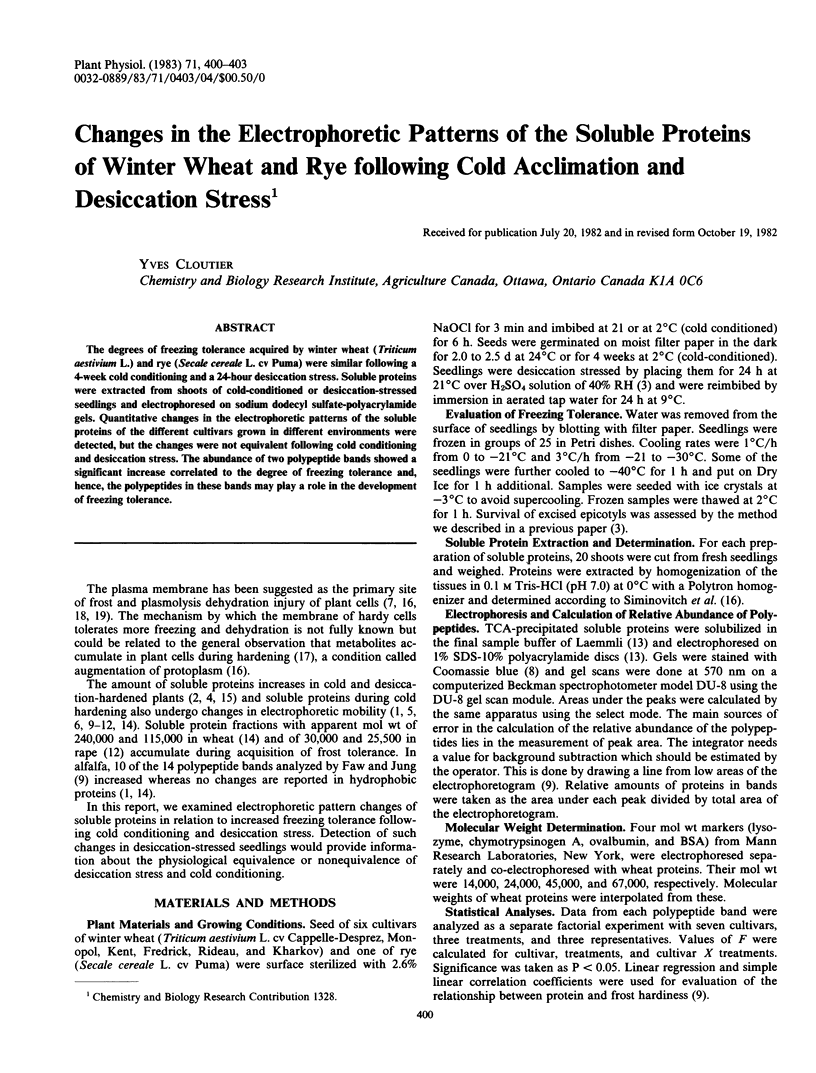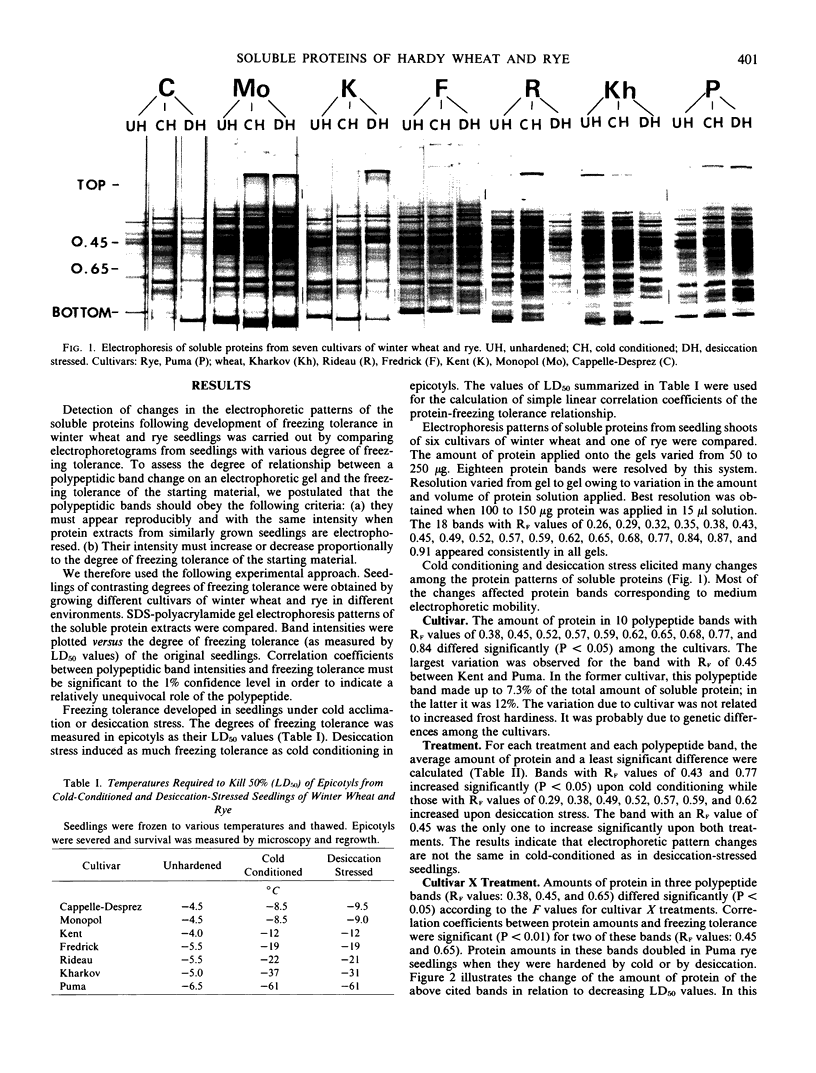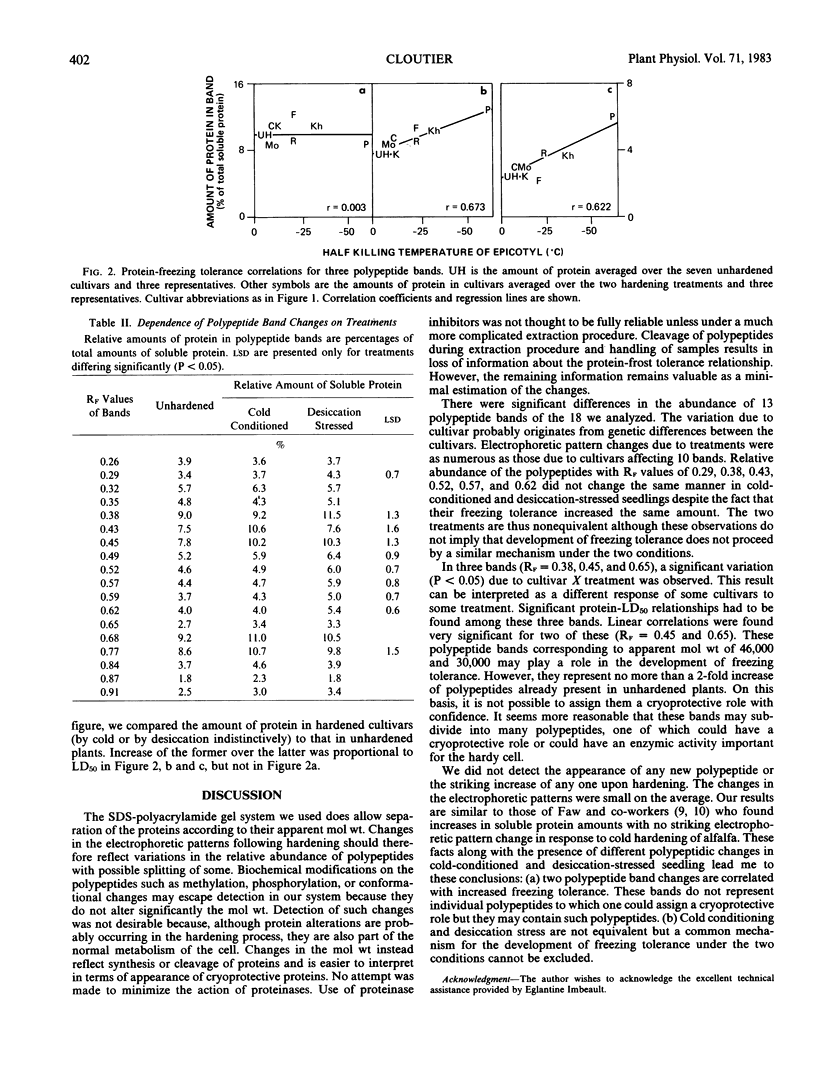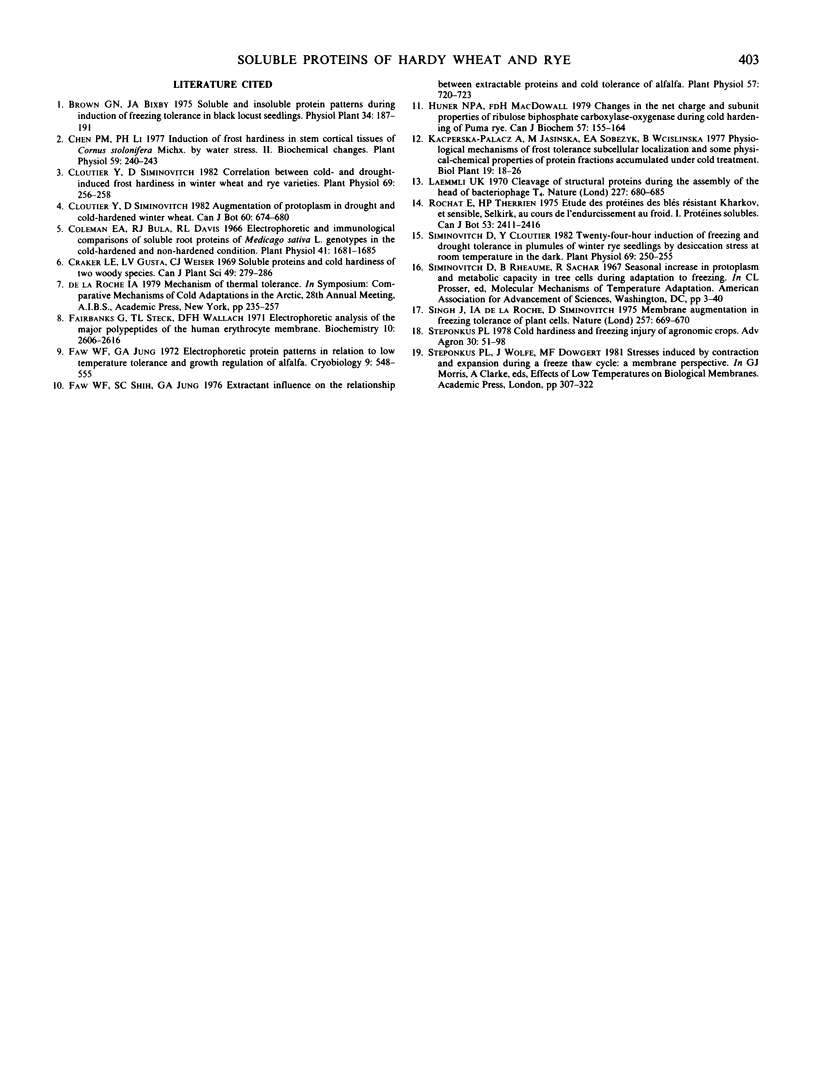Abstract
The degrees of freezing tolerance acquired by winter wheat (Triticum aestivium L.) and rye (Secale cereale L. cv Puma) were similar following a 4-week cold conditioning and a 24-hour desiccation stress. Soluble proteins were extracted from shoots of cold-conditioned or desiccation-stressed seedlings and electrophoresed on sodium dodecyl sulfate-polyacrylamide gels. Quantitative changes in the electrophoretic patterns of the soluble proteins of the different cultivars grown in different environments were detected, but the changes were not equivalent following cold conditioning and desiccation stress. The abundance of two polypeptide bands showed a significant increase correlated to the degree of freezing tolerance and, hence, the polypeptides in these bands may play a role in the development of freezing tolerance.
Full text
PDF



Images in this article
Selected References
These references are in PubMed. This may not be the complete list of references from this article.
- Chen P. M., Li P. H. Induction of Frost Hardiness in Stem Cortical Tissues of Cornus stolonifera Michx. by Water Stress: II. Biochemical Changes. Plant Physiol. 1977 Feb;59(2):240–243. doi: 10.1104/pp.59.2.240. [DOI] [PMC free article] [PubMed] [Google Scholar]
- Cloutier Y., Siminovitch D. Correlation between Cold- and Drought-Induced Frost Hardiness in Winter Wheat and Rye Varieties. Plant Physiol. 1982 Jan;69(1):256–258. doi: 10.1104/pp.69.1.256. [DOI] [PMC free article] [PubMed] [Google Scholar]
- Coleman E. A., Bula R. J., Davis R. L. Electrophoretic and Immunological Comparisons of Soluble Root Proteins of Medicago sativa L. Genotypes in the Cold Hardened and Non-Hardened Condition. Plant Physiol. 1966 Dec;41(10):1681–1685. doi: 10.1104/pp.41.10.1681. [DOI] [PMC free article] [PubMed] [Google Scholar]
- Fairbanks G., Steck T. L., Wallach D. F. Electrophoretic analysis of the major polypeptides of the human erythrocyte membrane. Biochemistry. 1971 Jun 22;10(13):2606–2617. doi: 10.1021/bi00789a030. [DOI] [PubMed] [Google Scholar]
- Faw W. F., Jung G. A. Electrophoretic protein patterns in relation to low temperature tolerance and growth regulation of alfalfa. Cryobiology. 1972 Dec;9(6):548–555. doi: 10.1016/0011-2240(72)90177-0. [DOI] [PubMed] [Google Scholar]
- Faw W. F., Shih S. C., Jung G. A. Extractant Influence on the Relationship between Extractable Proteins and Cold Tolerance of Alfalfa. Plant Physiol. 1976 May;57(5):720–723. doi: 10.1104/pp.57.5.720. [DOI] [PMC free article] [PubMed] [Google Scholar]
- Huner N. P., Macdowall F. D. Changes in the net charge and subunit properties of ribulose bisphosphate carboxylase--oxygenase during cold hardening of Puma rye. Can J Biochem. 1979 Feb;57(2):155–164. doi: 10.1139/o79-019. [DOI] [PubMed] [Google Scholar]
- Laemmli U. K. Cleavage of structural proteins during the assembly of the head of bacteriophage T4. Nature. 1970 Aug 15;227(5259):680–685. doi: 10.1038/227680a0. [DOI] [PubMed] [Google Scholar]
- Siminovitch D., Cloutier Y. Twenty-four-hour induction of freezing and drought tolerance in plumules of winter rye seedlings by desiccation stress at room temperature in the dark. Plant Physiol. 1982 Jan;69(1):250–255. doi: 10.1104/pp.69.1.250. [DOI] [PMC free article] [PubMed] [Google Scholar]



